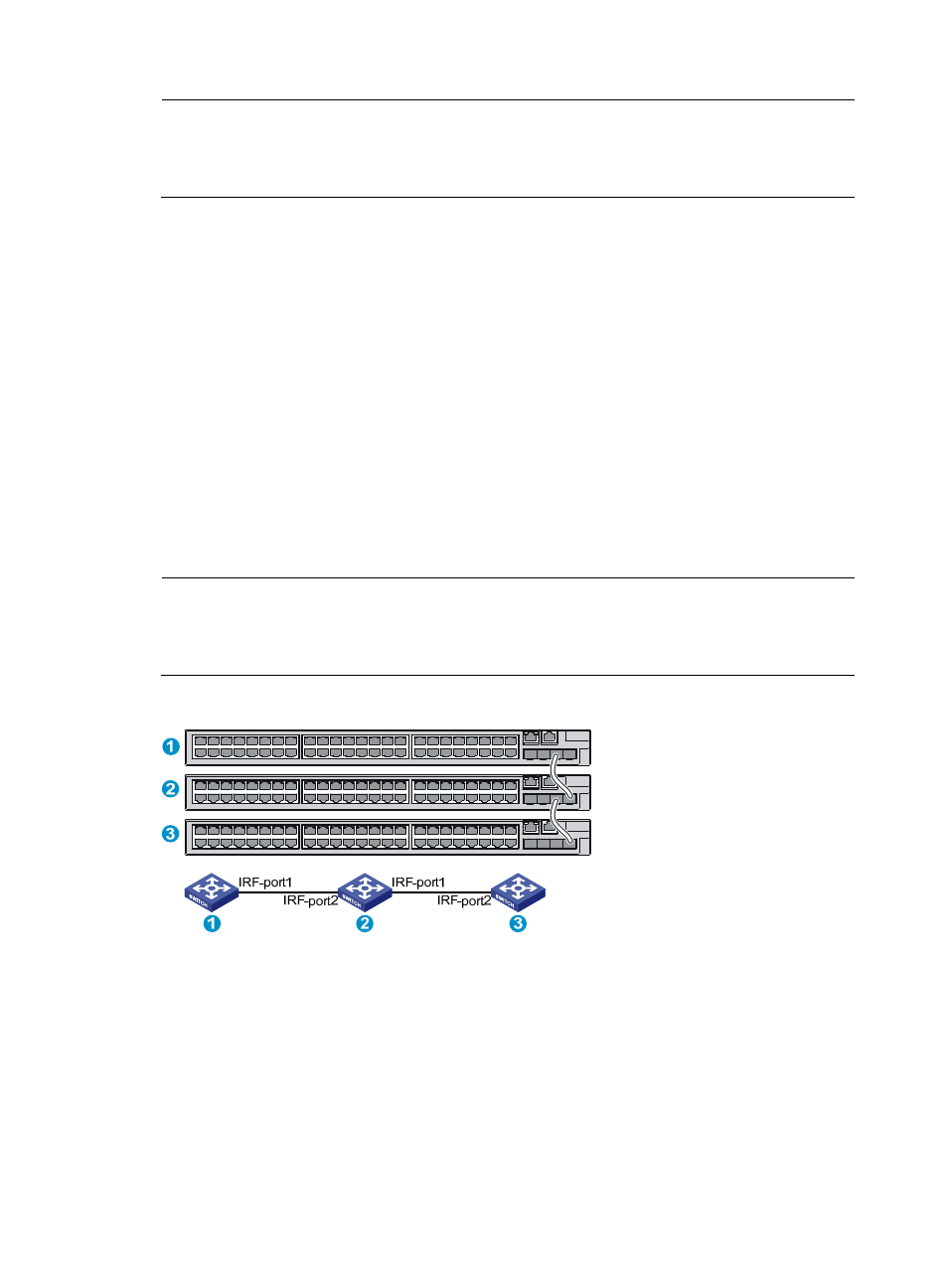Planning irf topology and connections – H3C Technologies H3C S5830 Series Switches User Manual
Page 43

NOTE:
IRF member switches will automatically elect a master. You can affect the election result by assigning a
high member priority to the intended master switch. For more information about master election, see
H3C
S5830 Switch Series IRF Configuration Guide.
Prepare an IRF member ID assignment scheme. An IRF fabric uses member IDs to uniquely identify and
manage its members, and you must assign each IRF member switch a unique member ID.
Planning IRF topology and connections
You can create an IRF fabric in daisy chain topology, or more reliably, ring topology. In ring topology,
the failure of one IRF link does not cause the IRF fabric to split as in daisy chain topology. Rather, the IRF
fabric changes to a daisy chain topology without interrupting network services.
You connect the IRF member switches through IRF ports, the logical interfaces for the connections
between IRF member switches. Each IRF member switch has two IRF ports: IRF-port 1 and IRF-port 2. An
IRF port is activated when you bind a physical port to it.
When connecting IRF member switches, you must connect the physical ports of IRF-port 1 on one switch
to the physical ports of IRF-port 2 on its neighbor switch.
The S5830 switches can provide 10-GE IRF connections through SFP+ ports, and you can bind several
SFP+ ports to an IRF port for increased bandwidth and availability.
NOTE:
Figure 47
show the topologies for an IRF fabric made up of three S5830-52SC switches for
IRF connections. The IRF port connections in the two figures are for illustration only, and more connection
methods are available.
Figure 47 IRF fabric in daisy chain topology
37
